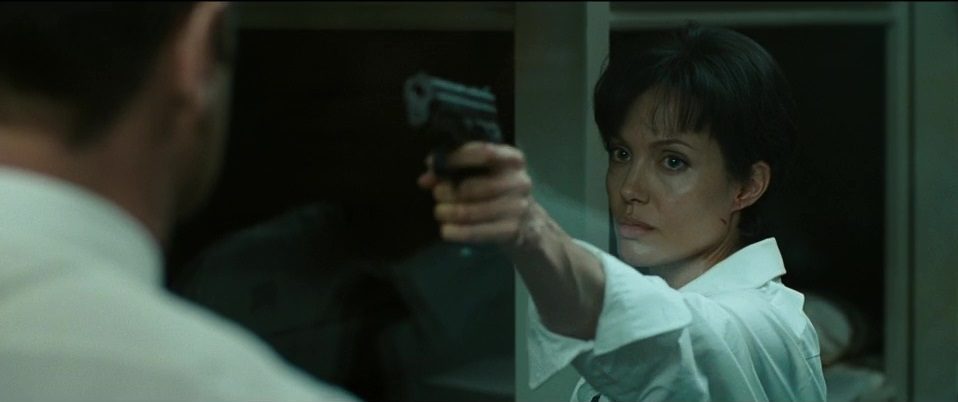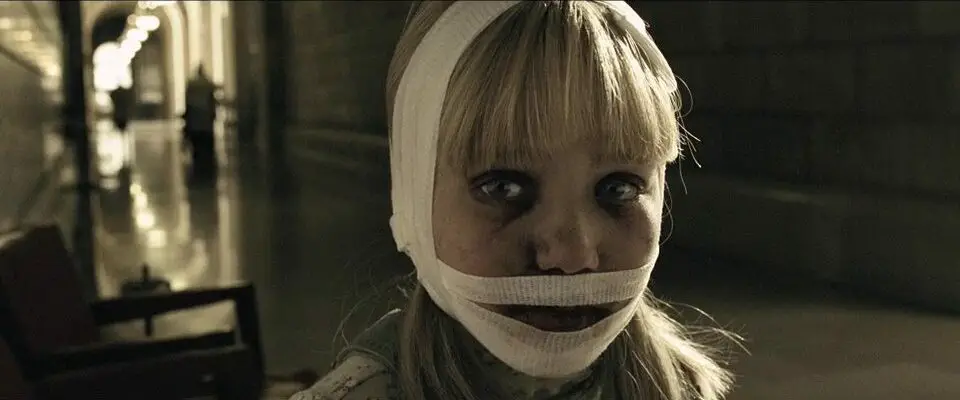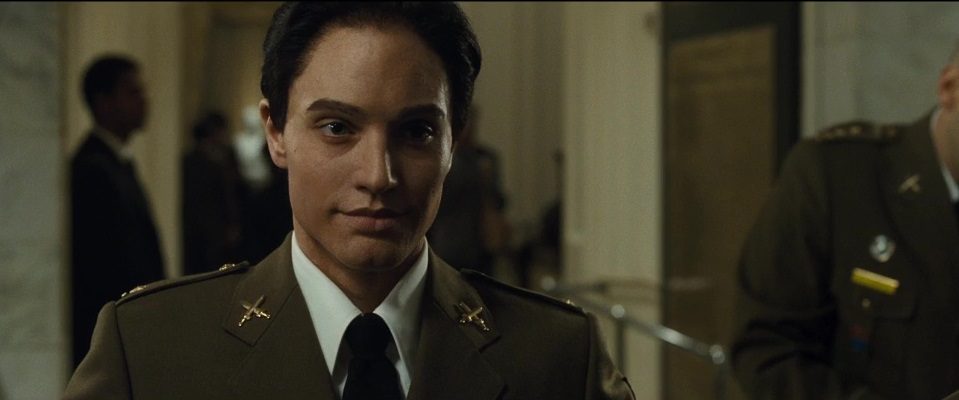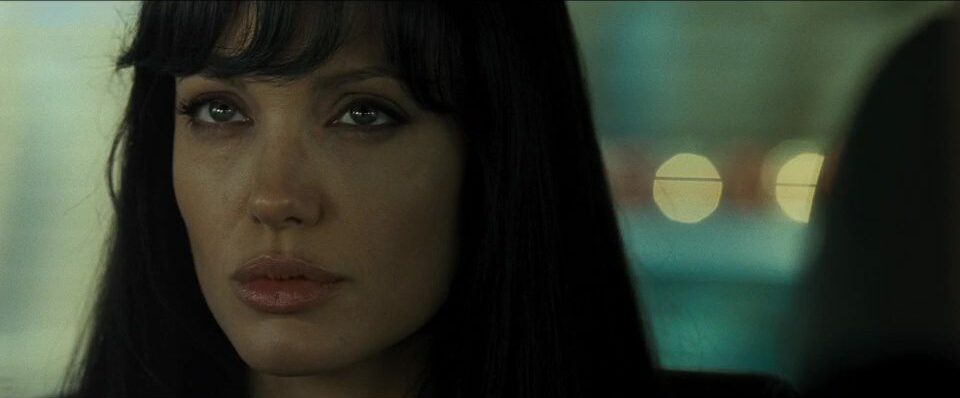With its superstar casting, ripped-from-the-headlines plot, and savvy action sequences emphasizing gender over sexuality, Salt (dir. Philip Noyce, 2010) seemed like the ideal film with which to start a blockbuster espionage franchise to compete with Matt Damon’s Bourne and Tom Cruise’s Mission Impossible series. Set in the post-Cold War counter-intelligentsia of US-Soviet relations, Salt sent its female protagonist Evelyn Salt, played by Angelina Jolie, on a mission to clear her name, dispatch her enemies—and save the world.
Not only did Agent Evelyn accomplish her mission, the film did what few female-led actioners had to date: killed at the box office. On its budget of just over $100 million, Salt took in nearly three times that while competing with Christopher Nolan’s Inception. Reviews were mostly strong too, citing Jolie’s performance, Kurt Wimmer’s savvy script, and the film’s thrilling action sequences. With an ever-so-slightly-ambiguous, sequel-friendly ending and Noyce’s enthusiasm, rumors were there might be not just a single follow-up but a whole franchiseful of Evelyn Salt vehicles.
We all know that never happened. Noyce’s attention soon drifted elsewhere (even though he directed only one other feature, The Giver, in the entire decade that followed). Jolie reportedly rejected a script draft in 2012. A television series was rumored, but none appeared. Various writers were rumored to be attached to the project, but by the end of the decade, nothing but radio silence could be heard about any inklings of a Salt sequel.

Maybe Salt was best a one-off after all. By the end of the decade not even the world’s most successful film studio employing the world’s most bankable female star could make much of a female-led Russian spy vehicle (though Black Widow‘s plot held some similarities to Salt‘s). Salt was a film whose success was in no small part dependent upon the energetic, enigmatic performance of its star and its feminist intentions, reworking a part that had been first conceived for a male hero into a star vehicle for Jolie. Wimmer’s script was originally titled “The Far-Reaching Philosophy of Edwin A. Salt” and had attracted the attention of Tom Cruise, who was reportedly for a long time in negotiations to play the lead. Ultimately, the role was deemed too similar to his Ethan Hunt character in the Mission Impossible franchise, and Cruise backed out.
At the time, Angelina Jolie had become not only an Oscar-winning supporting actor but a bona fide action star (Lara Croft: Tomb Raider, Mr. and Mrs. Smith). Changeling had earned her her first Best Actress nomination, and her high-profile marriage to Brad Pitt made her a household name and paparazzi-favorite target. She was looking specifically for a role that might make a successful franchise when the script for Salt crossed her desk, and the role was rewritten explicitly for her. Salt‘s third act had featured the protagonist rescuing his wife and child, so it was going to need some attention; much of what makes Jolie’s performance work so well is her character’s employing female-coded solutions to outwit her foes.
Shot almost entirely on location in Washington, D.C., New York City, and Albany, Salt eschewed the CGI default mode of most action pictures for scenes focusing nearly entirely on practical stuntwork (CGI was used, but primarily for environments, backgrounds, explosions, and the like). Jolie herself performed most of her own character’s stunts, even though she was less than a year removed from giving birth to her twins Knox Léon and Vivienne Marcheline.

Jolie may have been the first action hero to kick, fire, climb, and fight her way through a film shoot just months removed from delivering twins, but Salt was hardly the first or only film to feature a female as its protagonist. Of course, the vast, vast majority of studio releases are male-centric: written by, directed by, and starring males. The minority written, directed by, or starring women have tended, traditionally, to be dramas and comedies. Only very recently has that imbalance begun to change in the wake of the worldwide success of Patty Jenkins’ 2017 Wonder Woman, though one has to wonder (sorry!) if that film’s momentum has already been lost. A handful of female-centric action films—Alien, Resident Evil, Terminator 2, Long Kiss Goodnight, Nikita, Kill Bill, Charlie’s Angels—had earlier made bank, but few so prominently featured a female star in a role written first for a man.
Action films feature the hero’s exploits and demonstrate their ability to transcend physical boundaries and limitations. In the aughts, the espionage film—a subgenre of action—enjoyed newfound success at the box office with the continued success of the Bourne and Mission Impossible franchises as well as the surprising revitalization of James Bond franchise starring Daniel Craig. Suddenly, these heroes’ international exploits were more than ever big-budget blockbusters. Yet each of these relied, largely, on traditional gender roles and generic expectations: a “Bond girl” of the 20th century may have gained greater agency than her counterpart from the 1960s, but her character was still secondary and her appeal typically sexual.
In contrast to these, Salt became not just a film with an unexplored gender reversal but one about a woman on her own, navigating a man’s world where the rules and rewards are written and gained by men, for men. In a male-oriented action film, an orderly domestic life is something blissful to which to retire when the last bullet is fired. In Salt, it’s an everyday reality wrenched from the heroine’s grasp, the thing she has to fight for. The revised script cannily rewrote and inserted a number of female-centric scenes and smaller moments that would have seemed inappropriate or implausible in a traditionally male-centric action saga.

As an orphaned adoptee, young Evelyn was given her name and identity only as a ward of the Soviet state, and numerous flashback scenes present the young girl’s progress through its espionage-agent-in-training program. For the most part, characters like Jason Bourne or Ethan Hunt spring fully formed in adulthood; rarely does a childhood flashback inform an espionage film. But for Evelyn, her origins and training are integral to her humanity, and the film largely is resistant to, while remaining cognizant of, the female agent as an object of sexual desire. There is, in Salt, no clever repartee of double entendres, no seduction scenes, no overt male gaze fetishizing the star’s sexualized body; the camera treats Jolie largely as it might a male action star, focusing primarily on her fighting skills and the spectacle of her flying through space as she eludes her would-be captors.
A handful of sequences call attention to Evelyn Salt’s status as a woman in a man’s world. The film’s first scene, with Jolie undressed to bra and panties, has Salt being waterboarded by North Korean interrogators; fortunately, the film otherwise presents her gender not as a source of clichéd victimhood or sexualized fantasy but one of empathy, intelligence, and ingenuity. In early scenes of her initial escape from the CIA, Evelyn drops her high heels for the sake of footspeed, covers a security camera with her panties, MacGyvers an explosive weapon from everyday cleaning solutions, dresses a wound with a Maxi-pad, pauses her escape to ensure her pet’s safety—and even helps a neighbor girl with her homework.
Even as Salt‘s reworked script positions Evelyn as a confident, supremely capable woman navigating a man’s world, it also pauses to demonstrate the fact that she can even pass as a man. Using her counterspy affiliation with the Russians, Evelyn adopts a mask and uniform of a young male in uniform to gain access to the White House. Her ruse is successful: CIA Agent Winter (Liev Schreiber) realizes Salt’s presence only after her Russian colleague has detonated a bomb and infiltrated security. The film’s tagline is “Who is Salt?” and this scene’s point is clear: Evelyn Salt is a woman, but she can pass as a man, and do anything a man can do—if not more.

Those sequences are what Salt does best. Unfortunately, in retrospect, it’s a bit easier to see how Salt never made for the franchise Jolie sought and Noyce envisioned. Most successful espionage franchises are based on existing intellectual properties. Mission Impossible rewrote and rebooted a well-known and much-loved television series with an impossibly memorable Lalo Schifrin theme. Bourne, like James Bond, was based on a series of best-selling books. There was, in all of these cases, a wealth of story content that had already proved popular with audiences, material that could be translated directly into plots and characters or, in the case of the Mission Impossible series, adapted and reworked in newer directions to suit its megastar’s needs, even if necessary disposing with the beloved source series’ supposedly unassailable protagonist.
Salt, in contrast, had nothing but its first film from which to draw. The world it built was one in which its protagonist could no longer function in the role it created for her: though she successfully cleared her name—at least to ONCIX Agent Peabody (Chiwetel Ejiofor) if not to the CIA or public at large—and prevented Winter from launching nuclear attacks, it’s clear Evelyn Salt has no role in the CIA in the future: neither the agency nor the public at large knows it was she who saved the Russian president or prevented nuclear apocalypse. Does she return to crack the spy-in-training program that raised her? Seek a new life in the wake of her husband’s death? Retire, temporarily, to some tropical retreat until a new adventure comes her way?
Though the script revisions adroitly addressed Salt’s gender, they did little to flesh out her character. Jolie’s Evelyn Salt is a first-class double agent, but how genuine was the love she and her entomologist husband shared? Who was—indeed, who IS—Evelyn Salt, other than the accumulated set of cloak and dagger skills she displays? When at the film’s conclusion Evelyn is released into the woods, there’s no obvious place for her to go or mission for her to tackle. Whatever compelled Noyce to think there was ample content for a sequel, much less a franchise, by the time the film was first released on Blu-ray, he’d already given up, saying whatever he had to give to the character could be found on the film and its alternate versions.
Jolie, meanwhile, went on to earn, if such a thing is possible, even greater international renown. She was deemed, on more than one occasion, “the world’s most beautiful woman,” but her accomplishments were not limited to her looks. She became a tireless women’s health advocate during and after her 2013 double mastectomy. As Special Envoy for the United Nations High Commissioner for Refugees (UNHCR), she worked to support the rights and conditions of refugees in dozens of countries; she went on to write and direct several acclaimed war dramas; and she became a visiting professor at the London School of Economics. On multiple occasions she was named the world’s most admired woman. It’s difficult to imagine any person with such a high-profile resume of humanitarian and artistic accomplishment to star simultaneously in an action franchise; Jolie has been too busy working to save the world in real life to do so as Evelyn Salt onscreen.

While Jolie earned accolades for her performance in Salt, many reviewers noted that it was up to her to make sense of a plot that was, to use critics’ words, inane, sloppy, and convoluted. While it may indeed be the case that Salt‘s characters are forced, generally, to react to the film’s often-absurd surprises (Salt is a Russian sleeper agent! No she’s not! Salt killed the Russian President! No she didn’t! Salt has been unjustly apprehended! No she’s released!), the plot overall is not all that far removed from the everyday reality of post-Cold War cloak-and-dagger activity between the two superpowers.
Throughout the aughts, a network of Russian sleeper agents—spies planted in the U.S. by the SVR—posed as ordinary American academics, industrialists, and policymakers. Employing all the techniques of espionage, from private Wi-Fi networks, flash memory sticks, encoded text messages, invisible ink, shortwave radio, public-place bag swaps and the like, these agents passed as everyday Americans but gained intelligence on all kinds of political, scientific, and financial activity. The case came to a head on July 9, 2010—just two weeks before Salt‘s release!—when ten agents were arrested and then deported following an FBI investigation. Each pleaded guilty, and all ten were then exchanged for four Russian nationals.
Yet at least four others escaped, and many others were widely understood to be in existence. One of the arrested, Anna Chapman (aka Anna Vasil’evna Kushchenko), whose U.S. cover was as CEO of PropertyFinder Ltd, a website selling real estate internationally. gained celebrity status for her model looks: then-Vice President Joe Biden joked to Tonight show host Jay Leno “It was not my idea to send her back.” Enjoying her freedom in Russia, Chapman went on to pose in the Russian Maxim magazine in Agent Provocateur lingerie, where she was included in its list of “Russia’s 100 sexiest women.” The episode suggests that a comely female spy embedded as an American in the service of Russia was not at all far-fetched but rather a contemporary reality.
While Salt resists the temptation to sexualize or fetishize its action star for her model looks or female form, and while it works to remind viewers of its protagonist’s gender in the excessively masculinist world she inhabits, the film cannot even pass the first of three conditions of the Bechdel Test. Named for cartoonist Alison Bechdel and based on her strip “Dykes to Watch Out For,” the test asks if a film meets three conditions: that it have two named female characters; that they talk to each other; and that they talk about something other than a man. Evelyn Salt’s only conversation with another female character is with the unnamed young neighbor (Yara Shahidi) to whom she entrusts the care of her dog. (Of over 9,000 films in the bechdeltest.com database, nearly 90% meet the first condition; only 56.7% meet all three.)
The Bechdel Test is, of course, at best a blunt instrument for characterizing whether a film even begins to represent women in its narrative. A film can pass all three criteria and nonetheless exhibit misogyny just as another might fail all three and be hailed for its progressive feminism. But in the case of Salt, it’s interesting that for all the film does to invert the gendered tropes of the espionage thriller, and for all it does to persuade us that its protagonist can navigate a masculine world, that it can’t quite imagine something as minute in scope as two named female characters in conversation with each other.
Perhaps that too is a reason there was no Salt 2 and no franchise. Angelina Jolie may have imagined herself as the star of a James Bond-like intellectual property, one that could sustain the box-office momentum of Salt‘s initial release across a decade or more’s worth of successful sequels. Yet simply rewriting a script intended for a male action star to include several scenes reminding audiences of Evelyn Salt’s gender, posing her as a man, and endowing her with the physical prowess to complete her mission wasn’t enough to suggest the character itself was viable to sustain a franchise.

No film should be judged on whether or not it engendered a sequel—the world is too full of direct-to-video shlock to need more franchises—but the failure of Salt 2 to register in the imagination of Salt‘s director, writer, star, or studios suggests the film’s feminism was less than genuine. Salt made for a capable if implausible espionage film, but in the end, it had nowhere next to turn.



